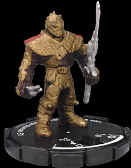|
|
Representations and their characteristicsIntroduction
Paws and representations are crucial to the look and feel of the game and the extend of contribution to the theme. Using wooden pawn in a SciFi game is possible, but not really advisable I guess. Also keep in mind that if you have a lot of representations to move each turn (all of them), the game easily gets boring, because each opponent has to wait endlessly.
What kind of pawns?The first thing when designing a game is asking your self if the pawn is just a pawn, without any specific characteristics / same specifics as the rest of the pawns. E.g. if you look at a standard kids (racing) game, all players have the same kind of pawn (only color varies) with no specific rulings. Also, it should be taken in account whether a player has just one pawn or more, and if so, in what order they move. So here are some options:
The various games have different pawn respresentation. Some games have just simple paws, the game Chess has 6 different pawns (but note: many different looks: Starwars, Disney, etc.)
or what about a Lords of the Ring Chess set? In this case, the look and feel do not change the game, but it sure appeals to collectors and people that feel attracted to a certain theme (e.g. StarWars). In addition many wargames (including the Warhammer series) different units are represented by intuative paws.
Especially in these roleplaying / wargaming / fantasy games it's curcial to have all the information regarding a individual figure at hand. Typically, these games come with character information such as given below (Bloodbowl, WarhammerQuest).
In Lord of the Rings (by Knizia) the player can choose what hobbit to take (or one is given at random), where as each individual hobbit has it's pro's. A very typical use of player cards is done by DiskWars and its following
games. In this case the 'cards' do not just represent the different paws, but also influence the way the pawns move (they move by actually flipping the disk over). In addition in this specific game, the catapult is more vulnerable that the small disks as the disk itself is very large (can easily be attacked or fired at (you need to understand the rules here, but just believe me)). 
Mageknight has another approach, instead refering to a manual, the information is written on the base of the figure. Even stronger, the figure has mechanism that allows you to change the original setting (by turning the figure / slotbase). Complex counter sheets may come along with some of these kind of games. These games are hardly played in a family scene. Unless you want a full scale wargame, keep the number of pawn limited.
|
|
|